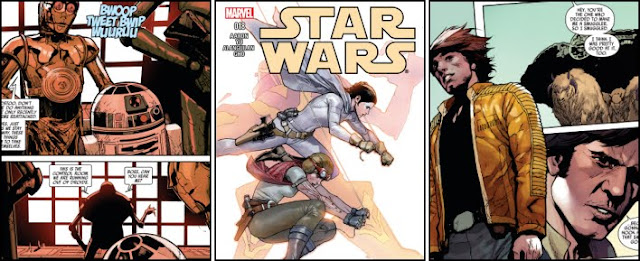 |
| IMMORTAL HULK No. 12, March 2019 |
Indeed, the utter despondency shown upon the scientist’s face following the sudden denouncement of this ‘nonsensical notion’ to his Department Heads and Rebecca’s subsequent surprise revelation to her husband that she was pregnant is positively palpable, and whilst hardly generating any sympathy for his resultant abusive behaviour towards his family, at least provides some semblance of understanding as to the selfish man’s emotional inadequacies; “Nine months later, you were born. A difficult birth. You were all but torn from the womb… It didn’t matter. I’d been replaced. You took the love I had from me. You did that, Bruce. You.”
True, these poignantly pencilled ‘flashback’ panels are somewhat scratchily sketched and inked by Eric Nguyen, as opposed to the twenty-page periodical’s regular artistic team of Joe Bennett and Ruy Jose. Yet whilst the American illustrator’s output for “All On That Day” is debatably less prodigious-looking than his peers' much more detailed depiction of an emaciated Hulk being brought to his senses by Jackie McGee’s tenderness, the level of animosity portrayed by young Bruce’s alcohol-fuelled parent when he discovers his tiny son easily building “an educational toy. Too complex for a child twice your age. And the instructions are still in the box” is utterly mesmerizing and doubtless provided an excellent hook for any potential “Hulk-heads” perusing the publication on the local store’s spinner-rack.
Perhaps somewhat slightly less successful, albeit only just, is this comic’s first proper look at the One Below All, a truly “malevolent entity that resides in the Below-Place - the deepest layer of Hell” and apparently is the Machiavellian antagonist behind the majority of the Green Goliath’s difficulties since the purple-trousered powerhouse was resurrected prior to this ongoing series commencing. Looking akin to something Jack “King” Kirby might have created upon his drawing table during the “pre-Marvel monster explosion” of the Sixties, this gigantic-sized leviathan literally engulfs the entire horizon with its billowing bulk and looks set to appropriately require the combined efforts of this book’s entire supporting cast if it is to be defeated…
First published on the "Dawn of Comics" website.'
 |
| The regular cover art of "IMMORTAL HULK" No. 12 by Alex Ross |






























